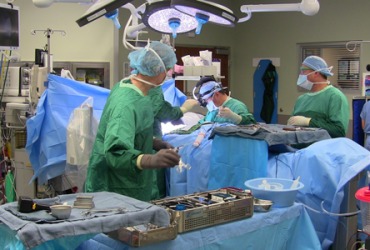
Spineopedia Mission & Purpose
Our mission is to be the most comprehensive online community devoted to the collection and dissemination of high quality, evidence based research findings, and unbiased study reviews related to spine care, while fostering transparent, open scholarly discussion amongst spine care professionals to improve treatment and outcomes. Spineopedia is a resource intended to enhance decision making by both spine providers and consumers.
Featured Spineopedia Reviewed Study
This is a retrospective review of reported outcomes of 158 patients, with a minimum of 25 years followup after microsurgical discectomy of a lumbar herniated disc. The Authors conclude that microsurgical discectomy surgery is an effective technique with high patient satisfaction. This is an important retrospective long term view on microdiscectomy, and certainly is consistent […]
9
Latest Spine News - December 13th, 2025 12:16 PM
- Risk factors for refracture after vertebral augmentation in postmenopausal women with osteoporotic vertebral compression fractures: a systematic review and meta-analysis
- Multilevel posterior neural arch fractures of the lumbar spine: a rare complication due to prior malignant infantile osteopetrosis
- C-Arm Oblique View–Assisted Screw Placement Method for Extremely Small Lumbar Pedicles in Thoracolumbar Vertebral Body Fractures
- Targeting Oxidative Stress with Amobarbital to Prevent Intervertebral Disc Degeneration: Part II. Rabbit Disc Herniation Model
- Preoperative Weight Loss is Not Beneficial in Obese Patients Undergoing Cervical or Lumbar Fusion – A National Cohort Study of 57,961 Patients
- Practice preference of revision surgery for recurrent lumbar disc herniation: an international survey of AO spine members
- Are Your School Scoliosis Screenings Still Analog?
- Answer to the Letter to the Editor of Y. Guo, et al. concerning “Beyond the Cobb angle: the radiographic measurement differences from halo gravity traction in patients with severe spine deformities before scoliosis surgical correction – cross-sectional study, local experience” by A.G.C. Barros et al. (Eur Spine J [2025]; doi: 10.1007/s00586-025-09270-5)
- CT morphometric analysis of thoracic vertebrae and pelvic parameters: implications for kyphosis and postural balance
- Correction: Diagnostic errors in spinal metastases: a systematic review of contributing clinical and systemic factors
- Improved outcomes of cyberknife stereotactic radiosurgery for spinal metastases: a retrospective study of sixty-one cases in one single center
- Diagnostic errors in spinal metastases: a systematic review of contributing clinical and systemic factors
- C2 direct pedicle screw insertion technique in craniovertebral junction anomaly: safety and efficacy in high-riding vertebral artery cases
- The “Idiopathic Scoliosis Graphical Representation of Worsening Trend of Natural History” (IS-GROWTH) communication tool provides a reliable prediction useful to manage long-term treatment during growth. 2025 SOSORT award winner
- Split cord malformations in adults
- Exploring the role of treatment adherence in spine rehabilitation outcomes: a multicenter analysis of 21,362 patients in India
- Answer to the Letter to the Editor of H. Wang, et al. concerning “Randomized controlled trial of orthosis after kyphoplasty: activity, pain and posture” by J. Hmida, et al. (Eur Spine J [2025]: doi: 10.1007/s00586-025-09433-4)
- Prehabilitation Reimagined as Policy: A Multidimensional Framework to Reduce Pain, Opioid Use, and Surgical Risk
- Effects of romosozumab on bone strength around a pedicle screw as evaluated by biomechanical computed tomography-based virtual stress tests in postmenopausal women
- Identifying biomechanical and neurophysiological risk factors for postoperative neurologic deterioration in OPLL surgery: A study using ROC curve and path analysis
- Effects of Romosozumab on Bone Strength Around a Pedicle Screw as Evaluated by Biomechanical Computed Tomography-Based Virtual Stress Tests in Postmenopausal Women
- Companion Spine LLC Completes Acquisition of the Business and Assets of Paradigm Spine GmbH, including the Coflex® and CoFix® Spine Implants and All Other Implant Systems, from Xtant™ Medical Holdings, Inc.
- Xtant Medical Completes Sale of its Coflex® Assets and Paradigm OUS Businesses to Companion Spine
- Sanara MedTech Inc. Announces Strategic Realignment to Focus on Surgical Business


